Abstract
Soluble cytoplasmic extracts of Candida albicans groups A and B were prepared and compared by quantitative immunoelectrophoresis experiments performed with a commercial anti-C. albicans group A immune serum. Although crossed immunoelectrophoresis, tandem crossed immunoelectrophoresis, and line immunoelectrophoresis revealed many cross-reactions between the two groups, some components seemed to be specific to group A. However, the complexity of the extracts studied did not allow us to demonstrate specific constituents with these methods. Crossed-line immunoelectrophoresis with and without absorption of antibodies in situ was then used, and four specific antigens unique to group A cytoplasmic extract were demonstrated, one of which appeared to be quantitatively important. The value of various quantitative immunoelectrophoretic methods applied to complex antigenic preparations is discussed.
Full text
PDF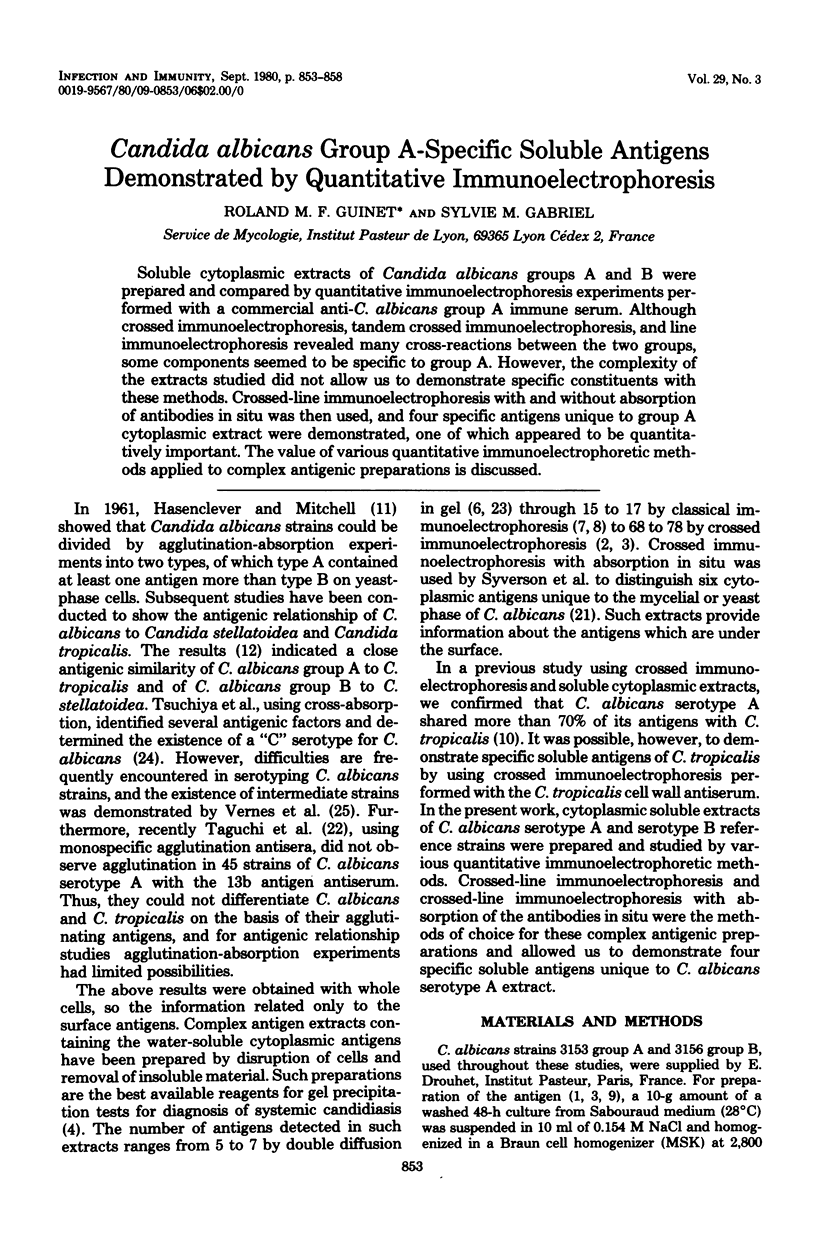
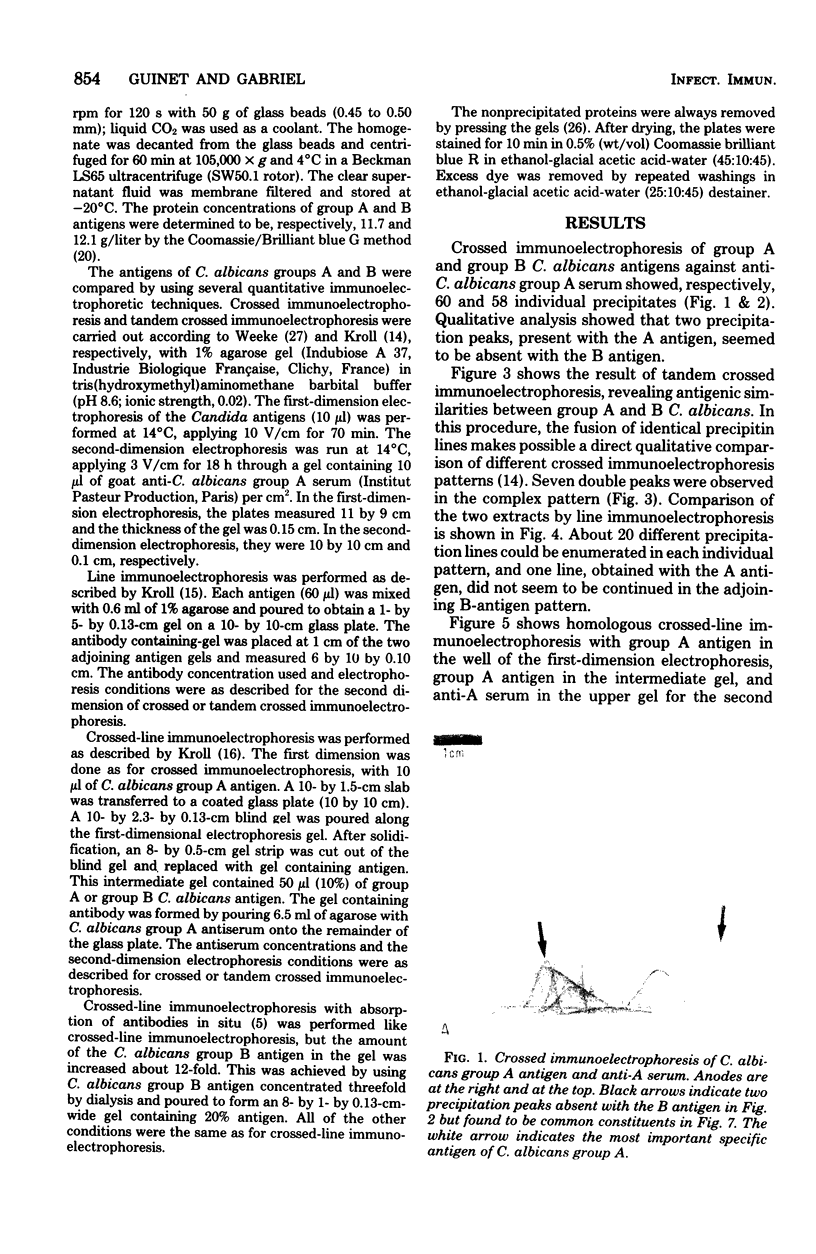
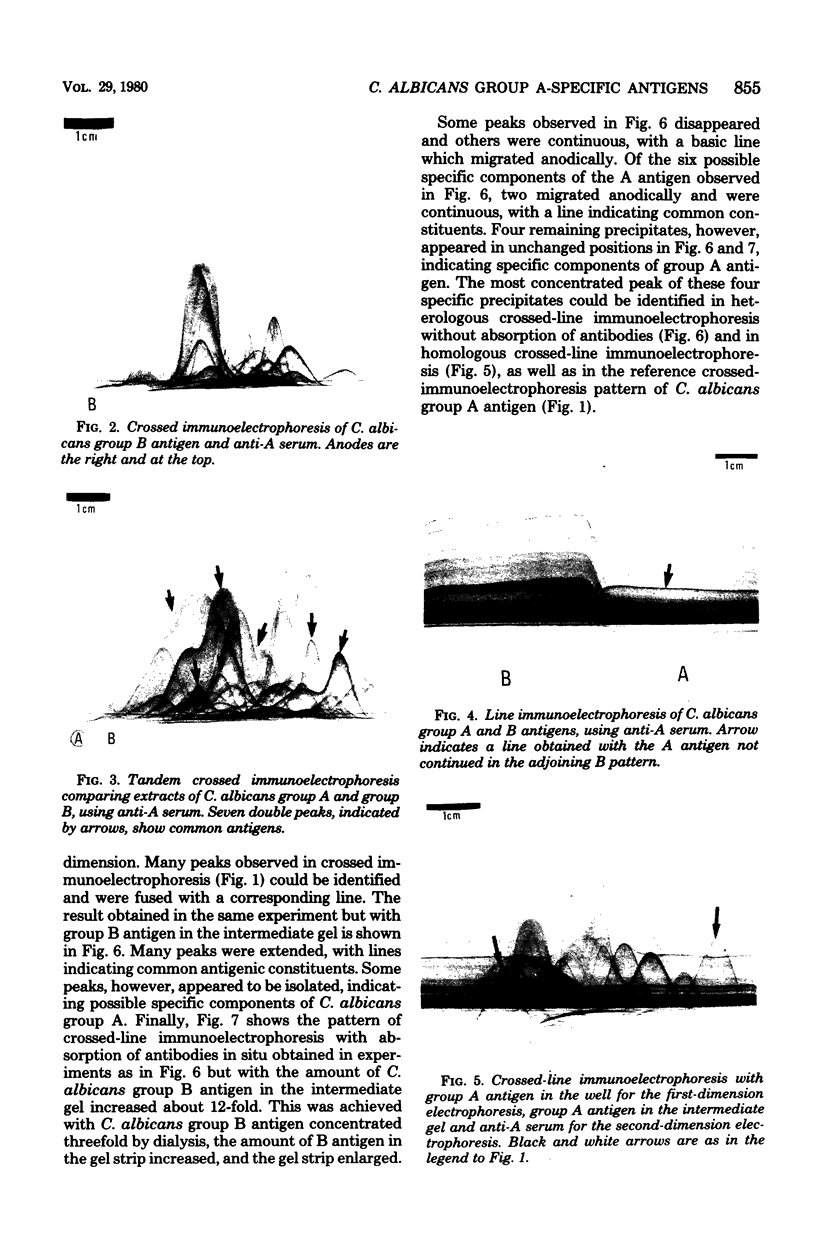
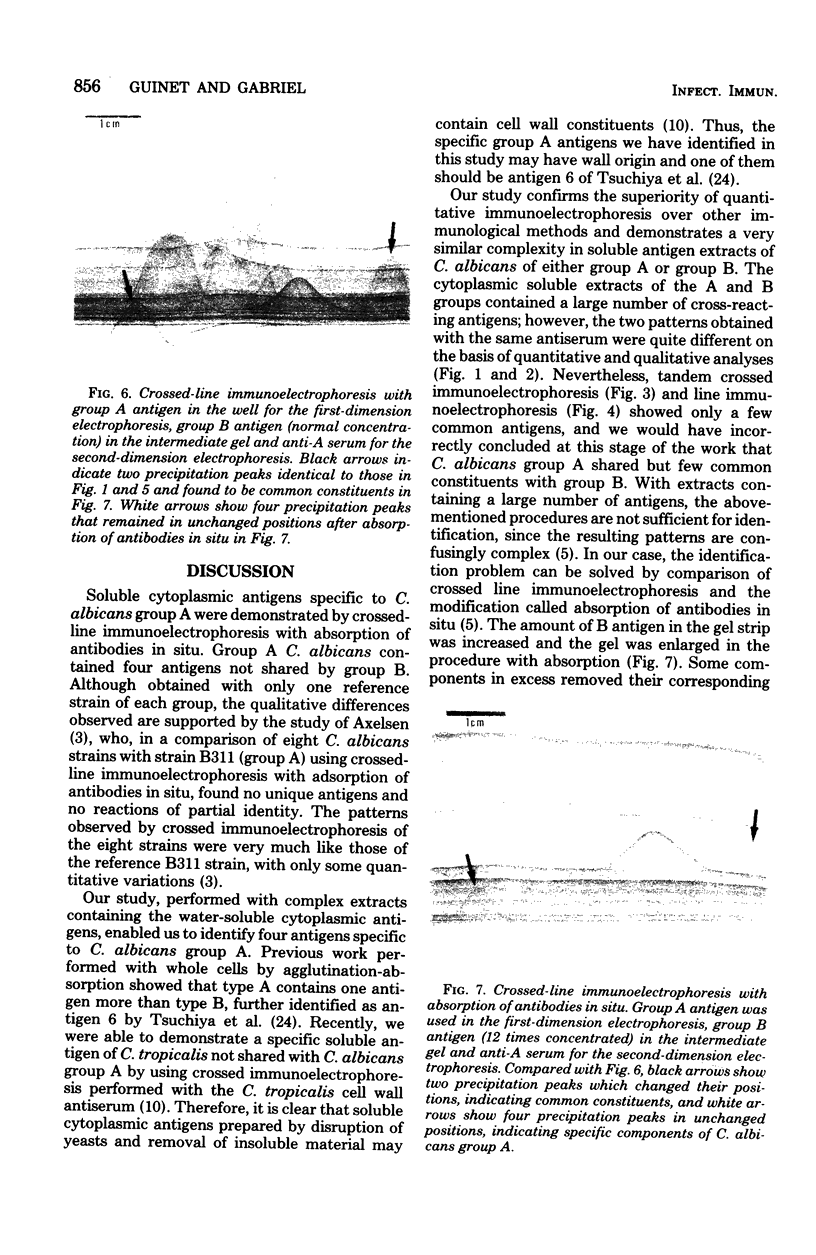
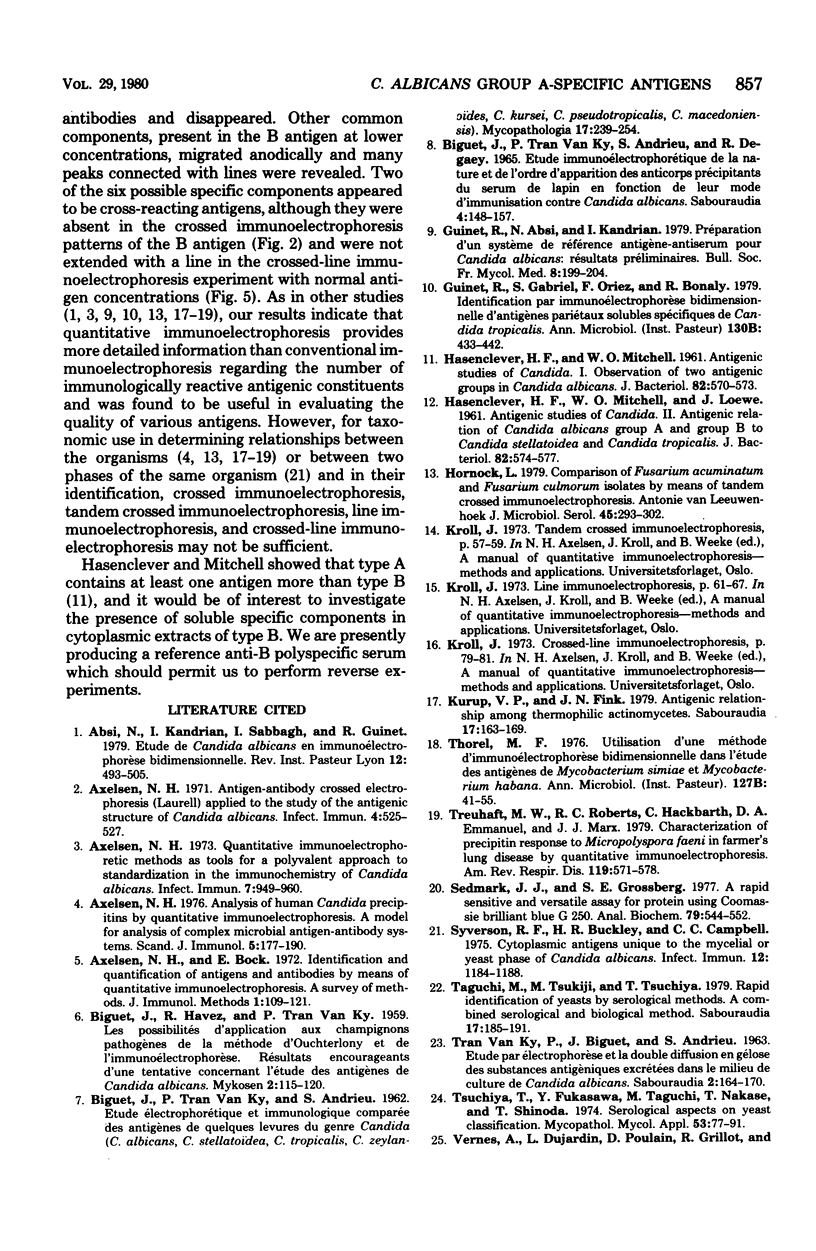
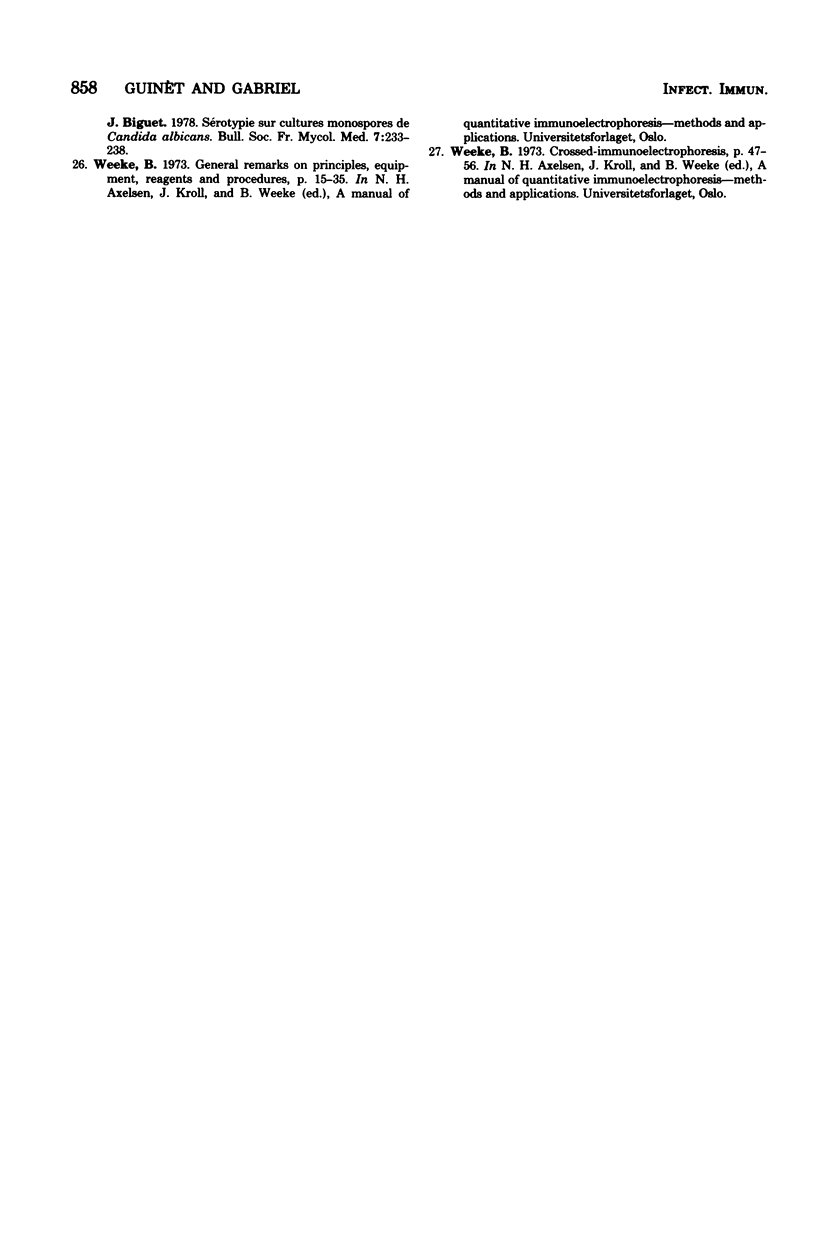
Images in this article
Selected References
These references are in PubMed. This may not be the complete list of references from this article.
- Axelsen N. H. Analysis of human Candida precipitins by quantitative immunoelectrophoresis: a model for analysis of complex microbial antigen-antibody systems. Scand J Immunol. 1976;5(3):177–190. doi: 10.1111/j.1365-3083.1976.tb00268.x. [DOI] [PubMed] [Google Scholar]
- Axelsen N. H. Antigen-antibody crossed electrophoresis (Laurell) applied to the study of the antigenic structure of Candida albicans. Infect Immun. 1971 Nov;4(5):525–527. doi: 10.1128/iai.4.5.525-527.1971. [DOI] [PMC free article] [PubMed] [Google Scholar]
- Axelsen N. H., Bock E. Identification and quantitation of antigens and antibodies by means of quantitative immunoelectrophoresis. A survey of methods. J Immunol Methods. 1972 Jan;1(2):109–121. doi: 10.1016/0022-1759(72)90038-5. [DOI] [PubMed] [Google Scholar]
- Axelsen N. H. Quantitative immunoelectrophoretic methods as tools for a polyvalent approach to standardization in the immunochemistry of Candida albicans. Infect Immun. 1973 Jun;7(6):949–960. doi: 10.1128/iai.7.6.949-960.1973. [DOI] [PMC free article] [PubMed] [Google Scholar]
- Biguet J., Tran Van Ky P., Andrieu S., Degaey R. Etude immunélectrophorétique de la nature et de l'ordre d'apparition des anticorps précipitants du sérum de lapins en fonction de leur mode d'immunisation contre Candida albicans. Sabouraudia. 1965 Oct;4(3):148–157. [PubMed] [Google Scholar]
- Guinet R., Gabriel S., Oriez F., Bonaly R. Identidication par immunoélectrophorèse bidimensionnelle d'antigènes pariétaux solubles spécifiques de Candida tropicalis. Ann Microbiol (Paris) 1979 Nov-Dec;130B(4):433–442. [PubMed] [Google Scholar]
- HASENCLEVER H. F., MITCHELL W. O. Antigenic studies of Candida. I. Observation of two antigenic groups in Candida albicans. J Bacteriol. 1961 Oct;82:570–573. doi: 10.1128/jb.82.4.570-573.1961. [DOI] [PMC free article] [PubMed] [Google Scholar]
- HASENCLEVER H. F., MITCHELL W. O., LOEWE J. Antigenic studies of Candida. II. Antigenic relation of Candida albicans group A and group B to Candida stellatoidea and Candida tropicalis. J Bacteriol. 1961 Oct;82:574–577. doi: 10.1128/jb.82.4.574-577.1961. [DOI] [PMC free article] [PubMed] [Google Scholar]
- Hornok L. Comparison of Fusarium acuminatum and Fusarium culmorum isolates by means of tandem-crossed immunoelectrophoresis. Antonie Van Leeuwenhoek. 1979;45(2):293–302. doi: 10.1007/BF00418592. [DOI] [PubMed] [Google Scholar]
- Kroll J. Crossed-line immunoelectrophoresis (73, 76). Scand J Immunol Suppl. 1973;1:79–81. [PubMed] [Google Scholar]
- Kroll J. Line immunoelectrophoresis. Scand J Immunol Suppl. 1973;1:61–67. [PubMed] [Google Scholar]
- Kroll J. Tandem-crossed immunoelectrophoresis. Scand J Immunol Suppl. 1973;1:57–59. [PubMed] [Google Scholar]
- Kurup V. P., Fink J. N. Antigenic relationships among thermophilic actinomycetes. Sabouraudia. 1979 Jun;17(2):163–169. doi: 10.1080/00362177985380221. [DOI] [PubMed] [Google Scholar]
- Sedmak J. J., Grossberg S. E. A rapid, sensitive, and versatile assay for protein using Coomassie brilliant blue G250. Anal Biochem. 1977 May 1;79(1-2):544–552. doi: 10.1016/0003-2697(77)90428-6. [DOI] [PubMed] [Google Scholar]
- Syverson R. E., Buckley H. R., Campbell C. C. Cytoplasmic antigens unique to the mycelial or yeast phase of Candida albicans. Infect Immun. 1975 Nov;12(5):1184–1188. doi: 10.1128/iai.12.5.1184-1188.1975. [DOI] [PMC free article] [PubMed] [Google Scholar]
- Taguchi M., Tsukiji M., Tsuchiya T. Rapid identification of yeasts by serological methods: a combined serological and biological method. Sabouraudia. 1979 Sep;17(3):185–191. doi: 10.1080/00362177985380271. [DOI] [PubMed] [Google Scholar]
- Thorel M. F. Utilisation d'une méthode d'immunoélectrophorèse bidimensionnelle dans l'étude des antigènes de Mycobacterium simiae et M. habana. Ann Microbiol (Paris) 1976 Jul;127(1):41–55. [PubMed] [Google Scholar]
- Treuhaft M. W., Roberts R. C., Hackbarth C., Emanuel D. A., Marx J. J., Jr Characterization of precipitin response to Micropolyspora faeni in farmer's lung disease by quantitative immunoelectrophoresis. Am Rev Respir Dis. 1979 Apr;119(4):571–578. doi: 10.1164/arrd.1979.119.4.571. [DOI] [PubMed] [Google Scholar]
- Tsuchiya T., Fukazawa Y., Taguchi M., Nakase T., Shinoda T. Serologic aspects on yeast classification. Mycopathol Mycol Appl. 1974 Aug 30;53(1):77–91. doi: 10.1007/BF02127199. [DOI] [PubMed] [Google Scholar]
- Weeke B. A manual of quantitative immunoelectrophoresis. Methods and applications. 1. General remarks on principles, equipment, reagents and procedures. Scand J Immunol Suppl. 1973;1:15–35. doi: 10.1111/j.1365-3083.1973.tb03776.x. [DOI] [PubMed] [Google Scholar]









